With the great weather we've been having lately it might be time to get outdoors and enjoy the flowers.


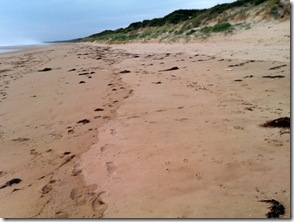 Despite the near tropical storms and downpours over the past fortnight, the summer berm is developing all along the beach at Venus Bay and only a few fresh erosion scarps can be seen. This upper beach is already flattening under mainly strong northerly winds and this brings promise of a wider summer berm this year. The full moon is tonight and it will be interesting just how high the overnight tide might reach.
Despite the near tropical storms and downpours over the past fortnight, the summer berm is developing all along the beach at Venus Bay and only a few fresh erosion scarps can be seen. This upper beach is already flattening under mainly strong northerly winds and this brings promise of a wider summer berm this year. The full moon is tonight and it will be interesting just how high the overnight tide might reach.
 Just got an alert of extreme activity from aurora australia right now, and hopefully through tonight. So It may actually be visible from Venus Bay, low in the southern sky.
Just got an alert of extreme activity from aurora australia right now, and hopefully through tonight. So It may actually be visible from Venus Bay, low in the southern sky.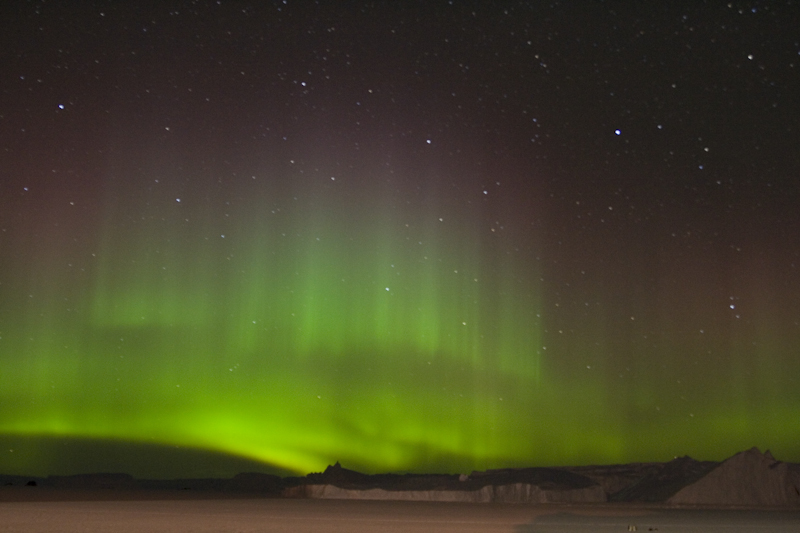
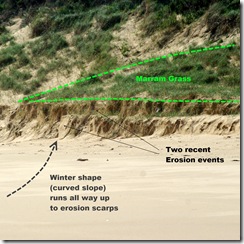
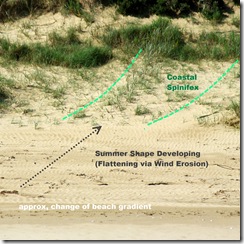
For a long time I have assumed that the taller erosions scarps are associated with deeper gutters out in the sand bars, and I still see that there will be a distinct gutter or channel in the vicinity of fresh erosion but the relationship with marram grass on the foredunes does seem to be becoming more compelling.So the big question is -
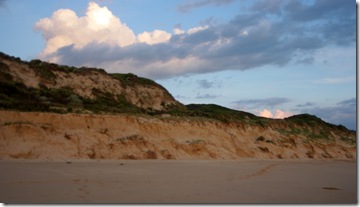 The past few weeks has seen more erosion along the Venus Bay beach in many locations. The profile of the upper beach is also steeper (more the classic winter berm) in front of the recent erosion. The erosion scarps are up to 3m high, probably the highest this year.
The past few weeks has seen more erosion along the Venus Bay beach in many locations. The profile of the upper beach is also steeper (more the classic winter berm) in front of the recent erosion. The erosion scarps are up to 3m high, probably the highest this year.
These are classic features of low pressure (storm surge) corresponding with higher tides and strong on-shore swells. You’ll see the sand is still there, as a wider beach and sand bars at low tide.
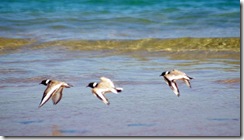 You are invited to a Hooded Plover Workshop coming up on Saturday15th October at the Venus Bay Surf Life Saving Club. Join us to find out more about these quirky, but vulnerable little birds that live on Venus Bay beach and other beaches in Cape Liptrap Coastal Park. The event is part of our Coastcare Victoria Community Grant project to protect Hooded Plovers within Cape Liptrap Coastal Park in partnership with Birds Australia and Parks Victoria
You are invited to a Hooded Plover Workshop coming up on Saturday15th October at the Venus Bay Surf Life Saving Club. Join us to find out more about these quirky, but vulnerable little birds that live on Venus Bay beach and other beaches in Cape Liptrap Coastal Park. The event is part of our Coastcare Victoria Community Grant project to protect Hooded Plovers within Cape Liptrap Coastal Park in partnership with Birds Australia and Parks VictoriaAt many location along the Venus Bay beaches, you can see two generations of erosion on the one dune face. The upper erosion scarp (a geological term for the small vertical face, escarpment, created when waves washed away some sand) has itself been partly eroded. As the sand face dries out it becomes unstable and collapses along wind picks up other dry sand and piles it infront of the face. Re-grown of saltbush grasses help stabile the sand collecting infron of the dune. Eventually the scarp itself will dissapear and the dune just have a steep front face. The recent erosion can be seen at the base as a new vertical face, with a areas where blocks of unstable sand have already tumbled from the sand faces above.
REMEMBER: These sand faces are remain very unstable, even if they sometimes look dry and stable.Even just a single square meter of wet sand will weigh close to 2 tonnes enough to fatally bury an adult. So children (even grown up ones) must be discouraged from playing on such erosion scarps
Having been away for a couple of what I have come to know as the most active erosion months (August and September, presumably because of the strong swells and storms are common in these months). I was surprised that maybe there had not been as much erosion as I was expecting. Still quiet a lot of the beach shows an erosion scarp of 1 to 2m. I was also surprised to see so much seaweed on the beach (perhaps the swells have also disturbed the kelp forest off shore).
This location (just south of the beach one ramp) also shows clearly something I had noted before. The fenced “rehabilitation” area, has mainly coastal spinifex, where as the eroded area to the south is dominated by marram grass. Perhaps the flatter slope angle of the dunes with coastal spinifex lets the occasional high waves run up their surface rather than starting an erosion notch.
I was keen to have a look at the beach and see how the big swells of last week, affected the beach. Swells bought to our coast by really big storms and heavy weather in the southern oceans. The surfers where disappointed because the winds where not off shore, to lift the waves, but the strong on-shore winds made matters worse for erosion, that push the water up against the coast even more and clearly helped the swells and waves they produced reached right up to the dunes. Even though we not quiet to the full month.
The result is a lot of new erosion, not everywhere but obvious all along the beach.
Guest Speaker: Jim Reside, Wildlife Unlimited
Jim has been working with native fauna for more than 30 years and is an expert in the ecology of many native animals including bats
Come and learn about these great and largely unknown little farm workers!
Wednesday 8thJune 2011
6.30pm to 9.00 pm
Alberton West Recreation Reserve Club Rooms
North end of Lanes Road, Alberton West on the west side
Lanes Rd runs between South Gippsland Highway & Tap Tap Rd. Vic Roads ref - Page 104 C3
Please register by 5th June.
Contact to register and for more information?bronwynt@wgcma.vic.gov.au
jimr@wgcma.vic.gov.au
 Everyone is familiar with the larger native mammals of Cape Liptrap – koalas, wombats, echidnas, kangaroos and wallabies
Everyone is familiar with the larger native mammals of Cape Liptrap – koalas, wombats, echidnas, kangaroos and wallabies
However there are many more creatures that are largely unknown
Find out about some of these animals:
Guest speaker: Jim Reside, a wildlife expert with 30 years experience of surveying & monitoring wildlife in Gippsland
7.00 pm to 9.00 pm
Thursday 9 June 2011
Tarwin Lower Community Centre

information?bronwynt@wgcma.vic.gov.au
jimr@wgcma.vic.gov.au

Today the swells as pounding in, the wind almost gale force but the waves do not appear to be eroding the dunes (they might tonight with a high tide corresponding with a low pressure and very strong onshore winds). What is most amazing is the surf foam racing across the sand and on up the dunes.


 There is a great article about protecting our beach and its pipis in this weeks Leongatha Star (22/3/2011). It contains a very real warning, by visiting American marine biologist Heather Hawk, that our once large population of pipis on the beach at Venus Bay could already be facing an impending crash in population through over harvesting.
There is a great article about protecting our beach and its pipis in this weeks Leongatha Star (22/3/2011). It contains a very real warning, by visiting American marine biologist Heather Hawk, that our once large population of pipis on the beach at Venus Bay could already be facing an impending crash in population through over harvesting.
“Little is known about the impact of harvesting in Victoria … so monitoring pipi population structure and harvests is critical for these beaches(Venus Bay), which serve as recruitment sources for all of southern Australia”
“Fisheries in Sydney and elsewhere have learned that the species is highly susceptible to local population crashes after overfishing”. …Heather Hawk
All this shouldn’t come as any surprise to Venus Bay locals and keen observers who have been making similar points for a few years now. If you haven’t already signed it,there is a petition by Venus Bay Residents to the Victorian government asking
To the Legislative Assembly of Victoria
The Petition of Residents and Visitors of Venus Bay, South Gippsland, Victoria
draws to the attention of the House
to the unsustainable harvesting of pipis and the associated excessive strain put on existing beach carparks, roadways, toilet and waste facilities during the busy summer period.
The petitioners therefore request that the Legislative Assembly of Victoria:
Enact laws or regulations affecting the inter-tidal zone between Arch Rock and Point Smythe to restrict the taking of pipis, with the current catch limits, to a season extending from May to September.
This is a very sound request in that it will hopefully stop the rampant harvesting of Pipis over summer, and give the Pipi stocks a better chance of developing to maturity.
If you can help out getting more signatures, download the form ( use icon above or click here) and get concerned friends, neighbors & colleagues to sign it. Please post completed petition to PO Box 234, Venus Bay, Vic 3956, by the 30th April to allow time for lodging with Parliament. Alternatively look for the petition stand at the end of the Tour de Tarwin or Lower Tarwin Market Mondays.

 There has been a lot of speculation and sensationalism on the net and news about the giant moon tonight. Ok it is as close to the earth as it gets and it is a full moon. BUT it is only fractionally closer and still a long long way away. If you can see the difference you may just be dreaming!
There has been a lot of speculation and sensationalism on the net and news about the giant moon tonight. Ok it is as close to the earth as it gets and it is a full moon. BUT it is only fractionally closer and still a long long way away. If you can see the difference you may just be dreaming!
What about the giant tides, well we do get higher tides at around the full moon, but remember it is the combined affect of the sun and the moon not just the moon alone and that will be a little stronger in a few days (see tide chart above, compliments of willy weather). so look for extra high and low tides Wednesday and Thursday.
The beach is loosing the distinct flatter area of dry sand from the upper beach zone and a continuous sloping curve, typical of the winter shape (or winter berm) has quickly developed for the beach profile. The reason is clearly the strong onshore winds, strong swells and powerful waves crashing onshore. The highest tides are however not reaching the scarps from previous erosion.
In previous years these changes have more typically occur in April/May.
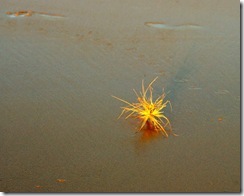 Australia doesn’t really have the true (by which I mean the American Western Movie Style) tumble weed but the seed of the humble Spinifex, Spinifex sericeus comes very close. This grass also known as the beach spinifex is crucial for dune stability. It usually forms tussocks and has long rhizomes that spread out through the sand and hold the dunes in place. It can easily be propogated from rhizome cuttings planted in damp sand. Interestingly this spinifex has separate male and female plants. The above photo shows the dried flower, from a female plant, now holding the fertile seed. It blows along the beach following the shifting sand and thus populating newly formed dunes. A very clever design!
Australia doesn’t really have the true (by which I mean the American Western Movie Style) tumble weed but the seed of the humble Spinifex, Spinifex sericeus comes very close. This grass also known as the beach spinifex is crucial for dune stability. It usually forms tussocks and has long rhizomes that spread out through the sand and hold the dunes in place. It can easily be propogated from rhizome cuttings planted in damp sand. Interestingly this spinifex has separate male and female plants. The above photo shows the dried flower, from a female plant, now holding the fertile seed. It blows along the beach following the shifting sand and thus populating newly formed dunes. A very clever design!
The introduced marram grass, is now competing with native spinifex all along the Venus Bay beach and may eventually replace all the native spinifex. The marram grass also helps stabilize the dunes, that is why it was originally introduced, but its dense growth may contribute to steeper dunes by entrapping more sand, at the expense of the upper beach zone (ie summer berm) This may be one factor in an increased susceptibility to direct wave erosion. The dense grass mat also inhibits other dune pioneer plants and may reduce the traditional nesting and foraging habitat available for some small animals and birds. For example at Summerland Beach on Phillip Island the change in dune shape bought about by marram grass replacing spinifex has meant special temporary penguin tracks have had to be constructed up the dunes to give access to the little penguins breeding areas.


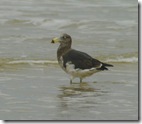
 I found this wonderful illustration on the Culture Victoria website under stories/ Land & Ecology.
I found this wonderful illustration on the Culture Victoria website under stories/ Land & Ecology. The first ring has all sorts of tiny crabs and critters that Hoodies like to eat. The second ring shows some of the birds that share the beaches with Hoodies - some that stay there all year round and others that fly long distances to spend summer on the beach in Australia. Most birds share the crabs and critters with the Hoodies, but others like to eat the Hoodies, and other birds!More details on the CV website
These creatures are linked together because they need each other to survive. Of course, humans are part of this web of life, and we have an affect on how it works.
Whilst the rest of the nation celebrates Australian Day, maybe the beach at Venus Bay is getting just a little more stressed each year. Certainly the number of “pipi tourists” peaks on public holidays like Australia Day. There are strict guidelines for pipi collection and hopefully we can avoid the fate of Port Stephens in NSW.
 This year has also seen the common sighting of jet skis on the beach. Whilst these particular craft were used sensibly and away from swimmers, others where spotted “hooning” around over summer. It is worth remembering it not just beach goers, the fish and birds will also be distributed.
This year has also seen the common sighting of jet skis on the beach. Whilst these particular craft were used sensibly and away from swimmers, others where spotted “hooning” around over summer. It is worth remembering it not just beach goers, the fish and birds will also be distributed.
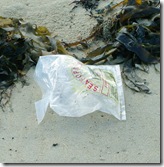 Once upon a time (just a few years ago) I seldom saw any rubbish on the Venus Bay beaches. Other than typical ocean flotsam and jetsam. Now a short look at the accumulations above the summer berm will show a surprisingly lot of litter, particularly plastic bottle tops, disposable bottles and plastic bags.
Once upon a time (just a few years ago) I seldom saw any rubbish on the Venus Bay beaches. Other than typical ocean flotsam and jetsam. Now a short look at the accumulations above the summer berm will show a surprisingly lot of litter, particularly plastic bottle tops, disposable bottles and plastic bags.
